The Company’s first new staging of TOSCA was created by Jean-Pierre Ponnelle in 1972 to honor the Company’s 50th anniversary. The original 1932 TOSCA was recreated in 1997 for an archival production by Thierry Bosquet which commemorated the Company’s 75th anniversary season and reopening of the Opera. As you’d expect, it was sung in Italian with English supertitles, with a few Latin phrases thrown in, noted by Anthony who speaks both Latin and Italian.
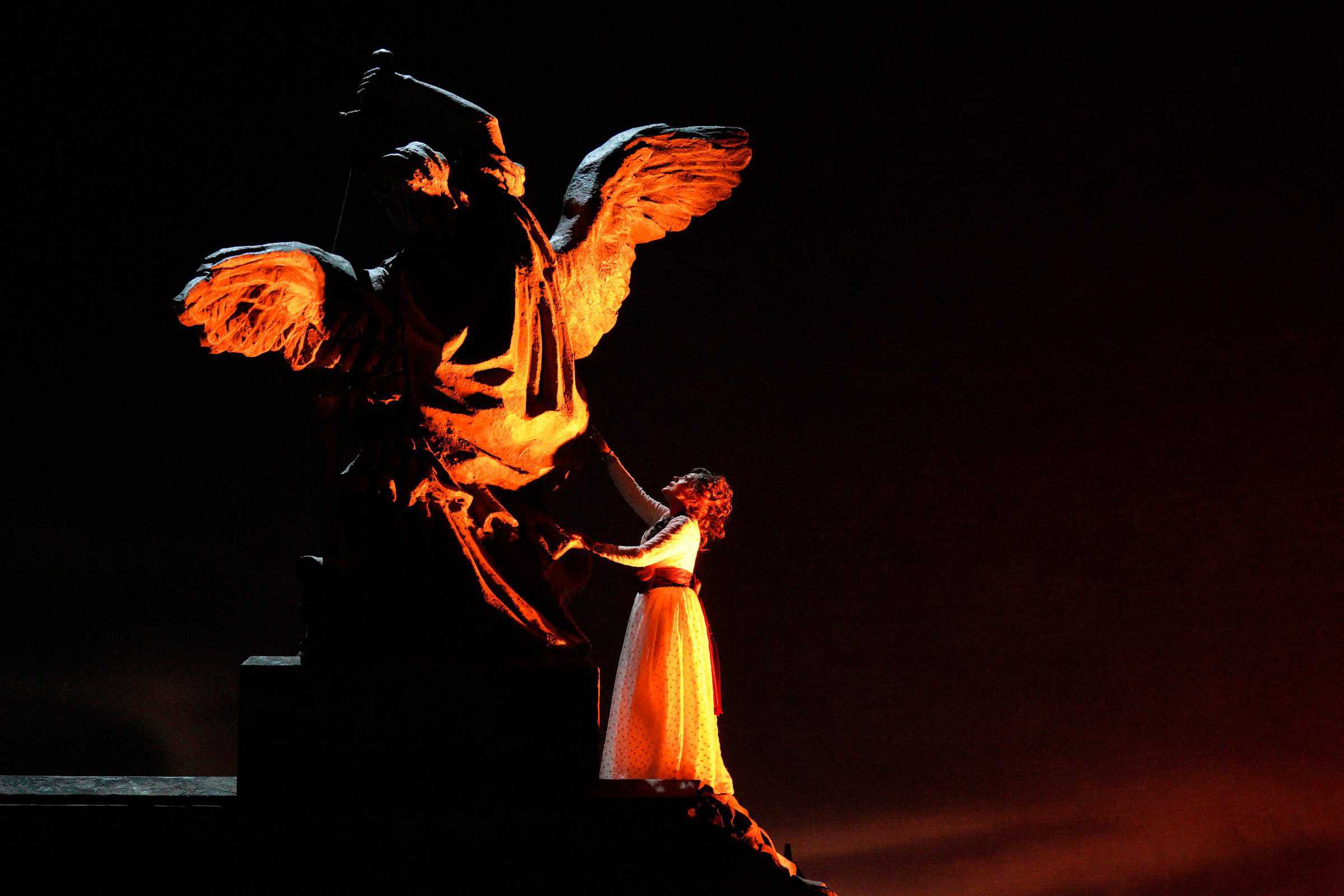
The dramatic final scene of TOSCA before she takes her life. Ailyn Pérez as the title role in Puccini’s “Tosca.” Photo: Cory Weaver/San Francisco Opera.
What Makes TOSCA Unique?
Like all operas, there’s no shortage of tragedy, but TOSCA gets to them quickly. The reason we opted to see TOSCA is because of our connection to all things Italian and ancient Rome, where this opera was set in the 1800’s. The backdrop for the first scene is in a church, where painter Mario Cavaradossi is working on a portrait of Mary Magdalene. The backdrop is dramatic and stunning, especially for lovers of Italian literature, art and culture like us. Famous opera singer Floria Tosca makes an entrance early on where we get a glimpse of her jealous proclivities which naturally play out in song.
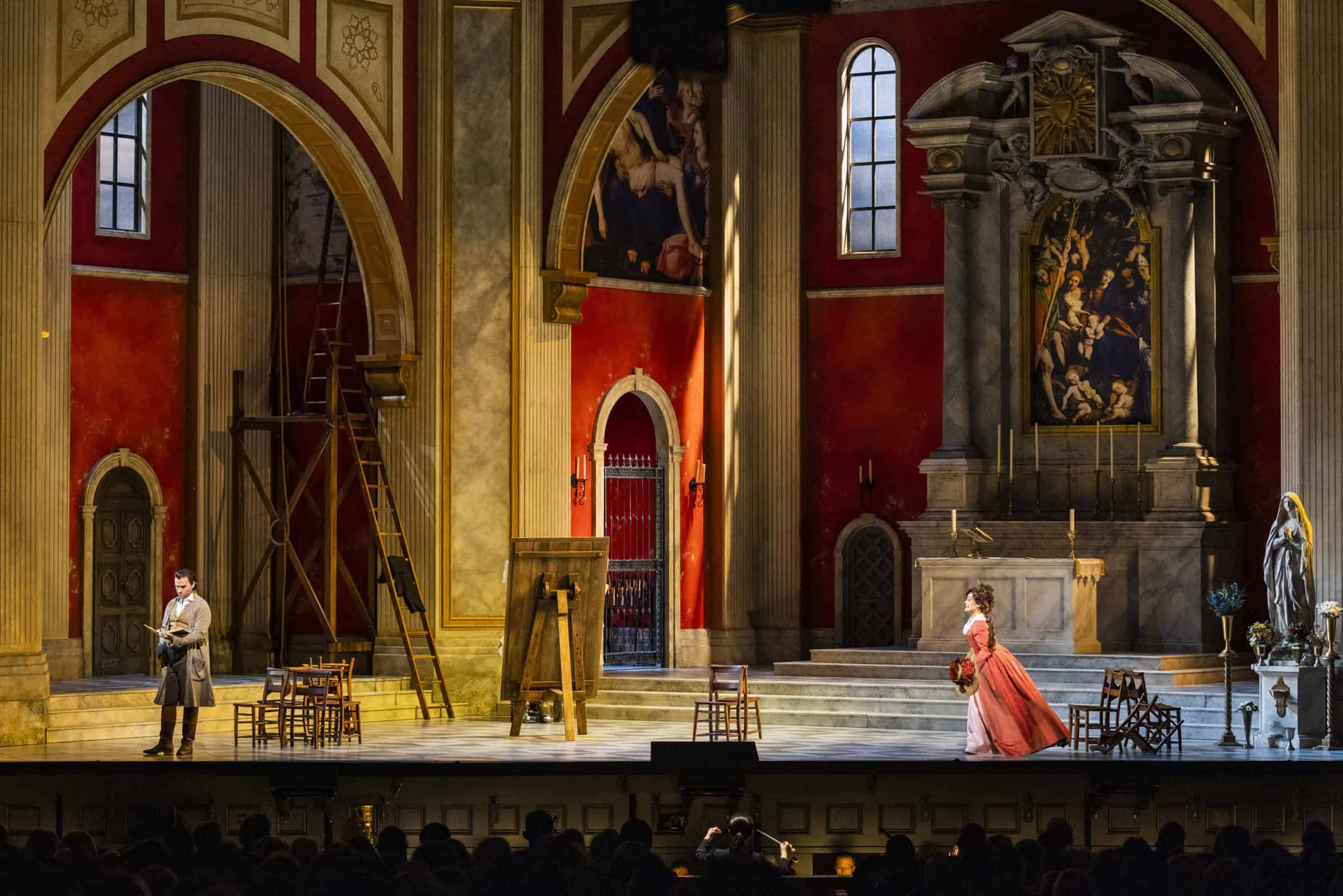
The Church Scene in Act 1. Michael Fabiano as Cavaradossi and Ailyn Pérez as the title role in Puccini’s “Tosca.” Photo: Drew Altizer Photography
Cavaradossi’s friend Cesare Angelotti, who was a political prisoner and former leader of the Napoleon resistance, escapes from prison and heads to the church to hide. Cavaradossi says that it isn’t safe for him there but agrees to bring him to his villa, where there is a special passageway from the church, insisting that Angelotti won’t be found there.
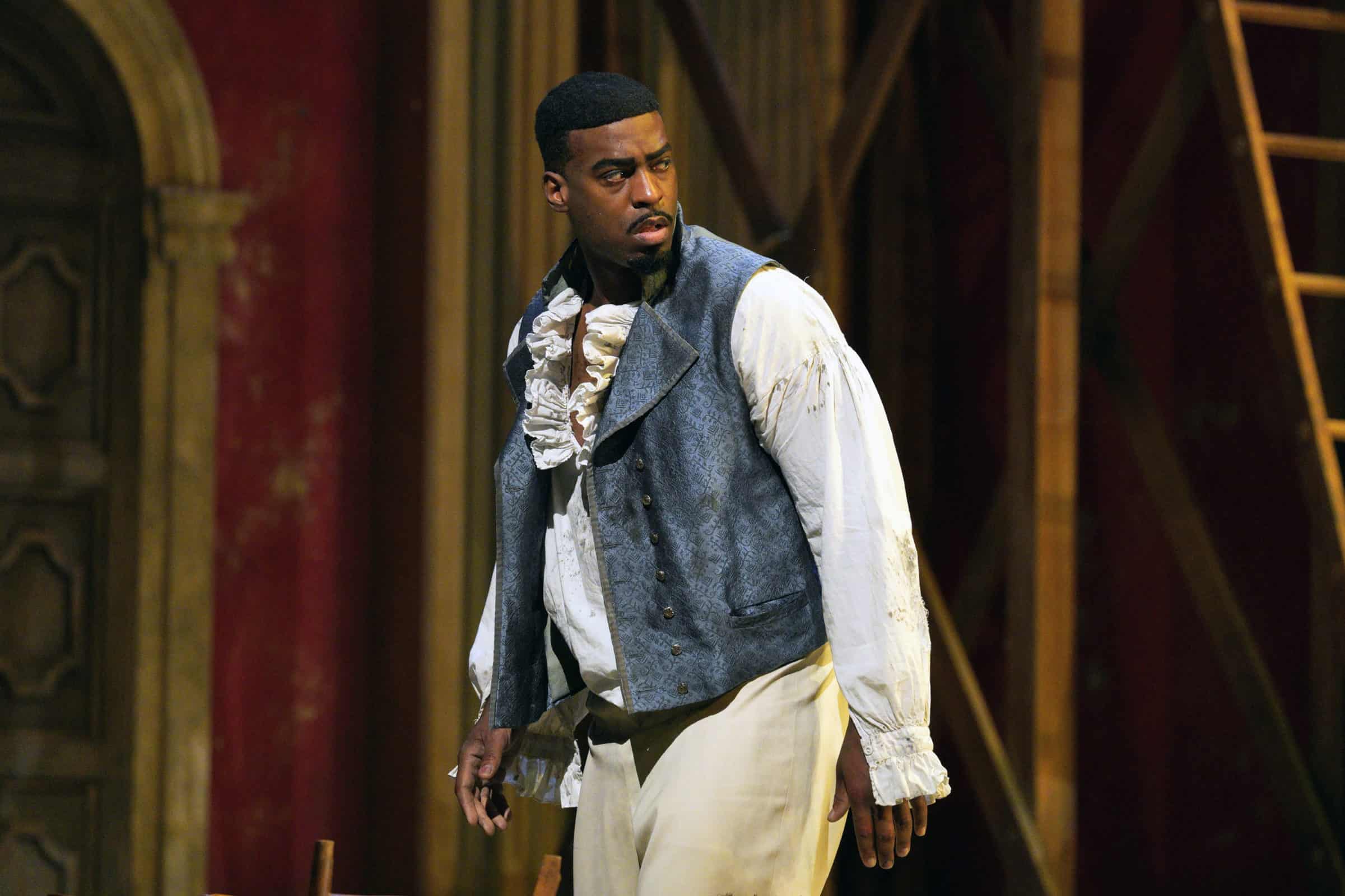
Soloman Howard as Angelotti in Puccini’s “Tosca.” Photo: Cory Weaver/San Francisco Opera
Tosca’s jealousy rears its head again before the end of Act 1 but the ever so romantic Cavaradossi ensures her of his dedication and commitment as they sing to one another against the church stage backdrop.
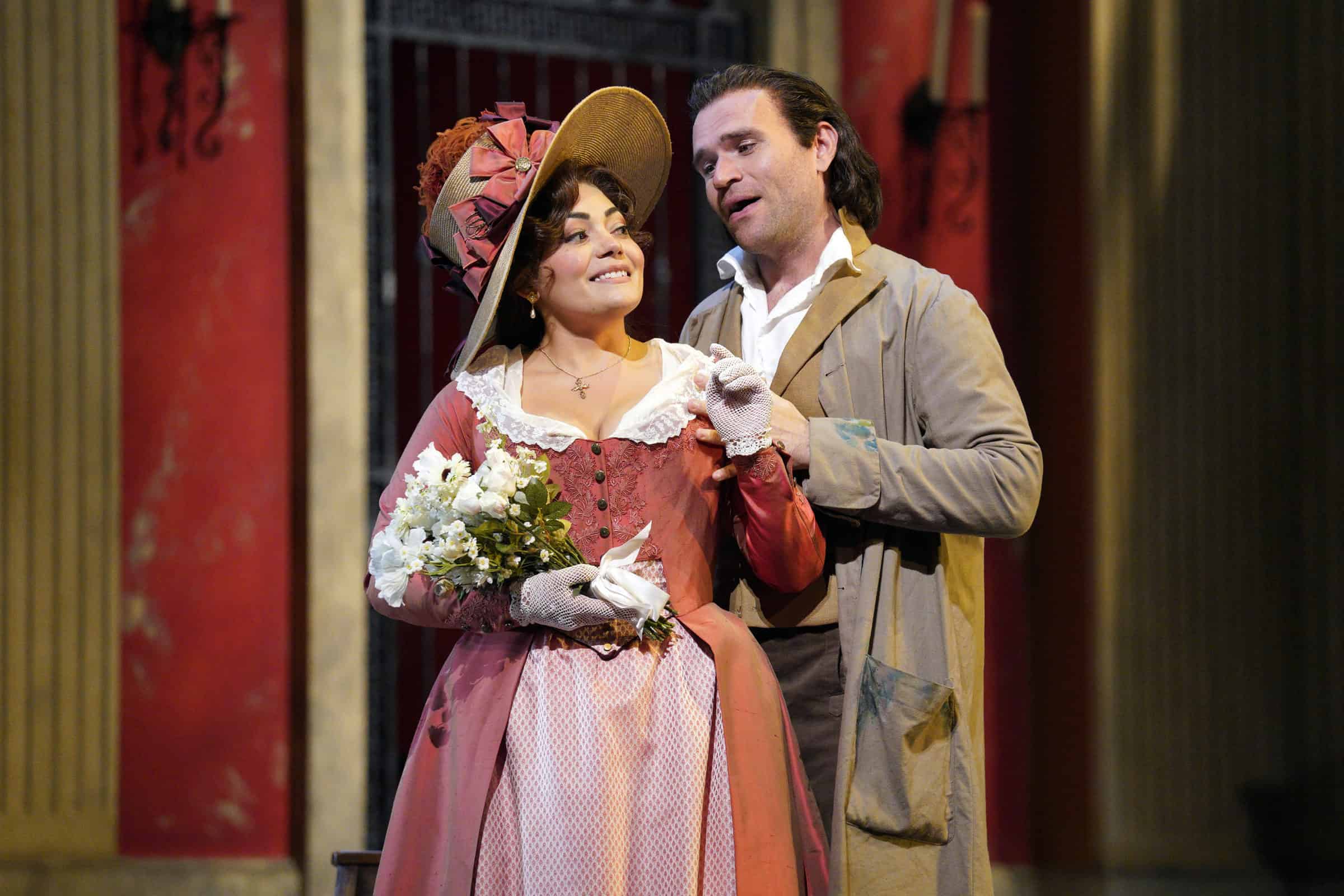
Ailyn Pérez as Tosca and Michael Fabiano as Cavaradossi in Puccini’s “Tosca.” Photo: Cory Weaver/San Francisco Opera
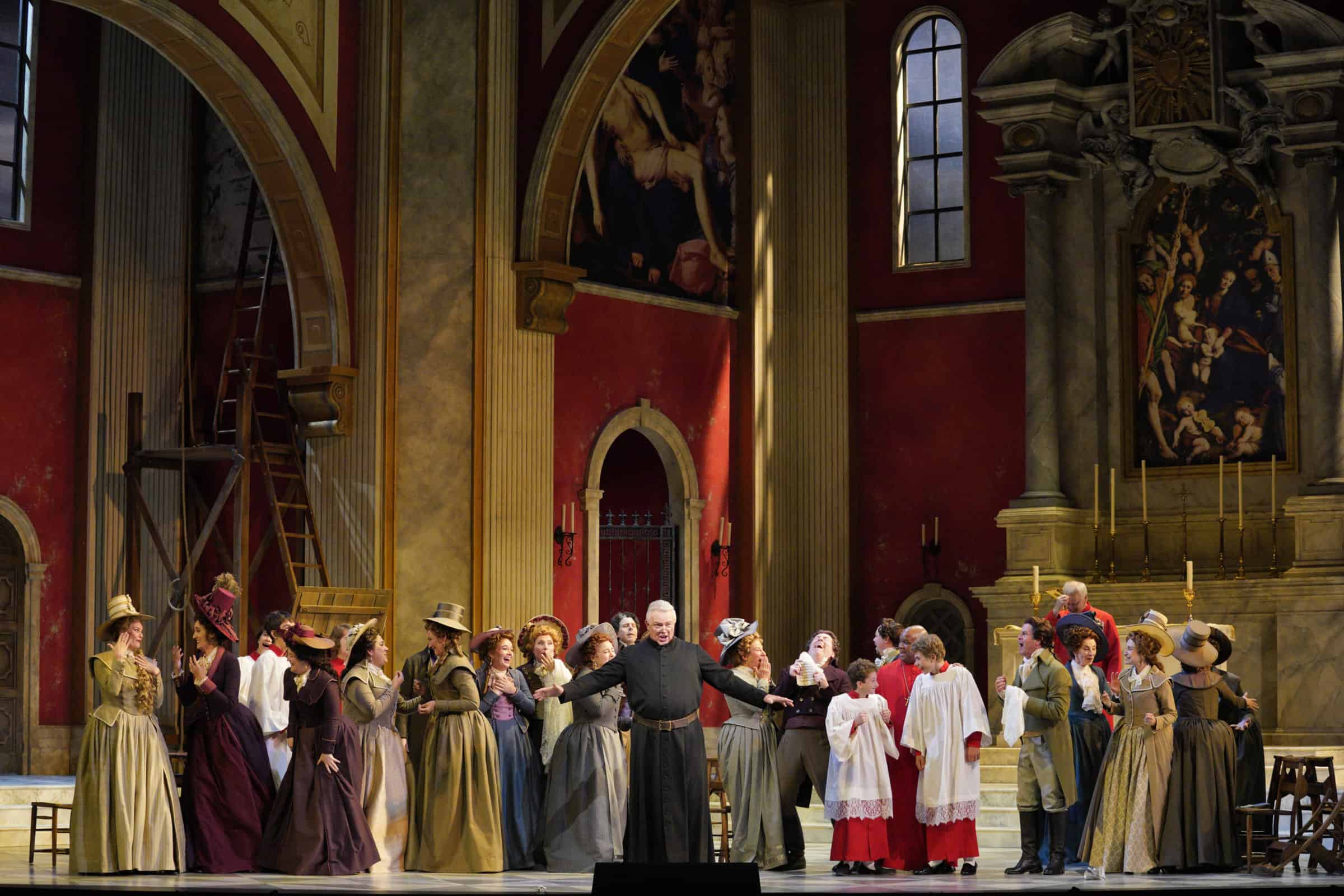
Dale Travis as the Sacristan and members of the San Francisco Opera Chorus in Puccini’s “Tosca.”. Photo: Cory Weaver/San Francisco Opera
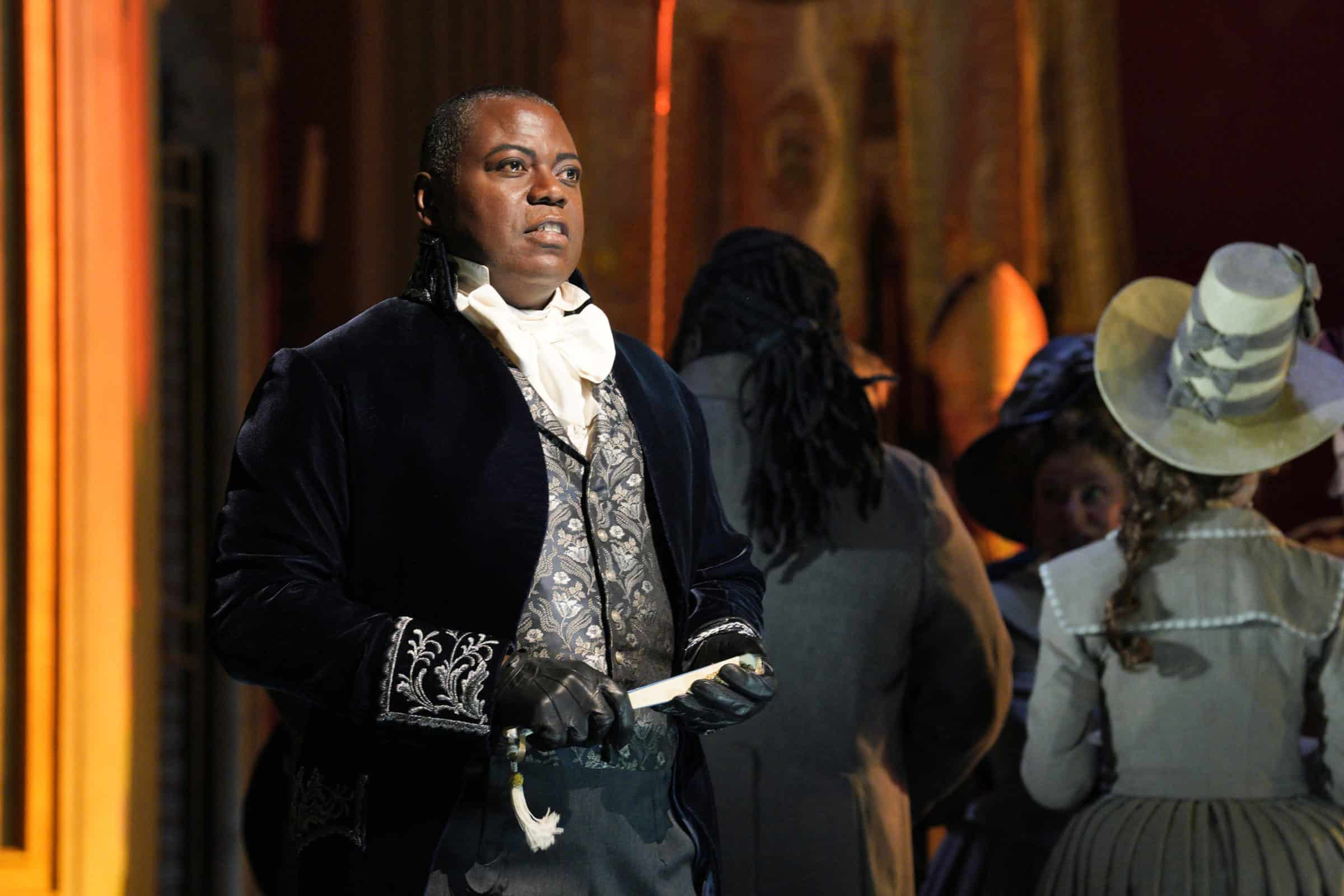
Alfred Walker as Scarpia in Puccini’s “Tosca.” Photo: Cory Weaver/San Francisco Opera
Of course Scarpia has a plan which he hopes will lead him to the escaped prisoner, convinced that Cavaradossi is involved. Not surprisingly, he uses Tosca’s jealousy and has three footmen follow her as the scene winds down to the crescendo of the Te Deum Hymn. Dramatic and beautiful, you’re left feeling sorry that Act 1 has come to an end.
Act II is no less dramatic because the suspense builds as Scarpia and his men continue to hunt down Angelotti and Cavaradossi, only to find the painter alone in his villa. To Tosca’s dismay and agony, they end up arresting her lover and despite torturing him, she pleads ignorance throughout. Scarpia’s corruption rears its ugly head as he makes a bargain with Tosca — in exchange for a passionate escapade with him, he agrees to release her lover from prison, telling her that there will be a mock execution to save face with the outside world. He also agrees to write a ‘safe-conduct’ pass however disgusted by the chain of events, she finds a dagger which she uses to kill him.
Like I said, the second act’s drama keeps you on the edge of your seat. Knowing how women were treated in Roman times in the 1800’s, you can’t help but feel a bit of excitement for her strength as she takes charge.
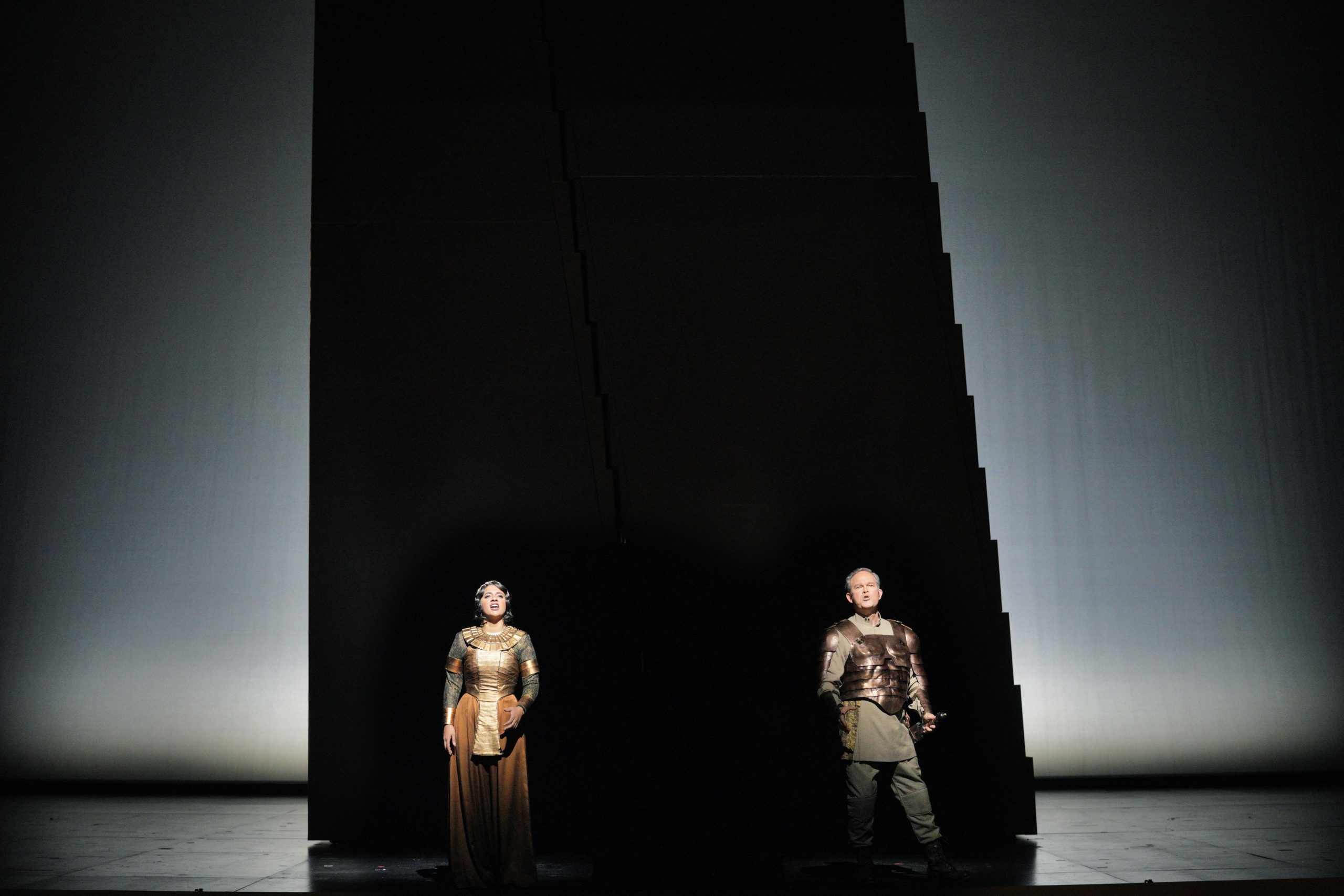
Ailyn Pérez as Tosca and Alfred Walker as Scarpia in Puccini’s “Tosca.” Photo: Cory Weaver/San Francisco Opera
The third act is somewhat dreary and the backdrop too is dark but it’s still beautiful albeit eerily so with the dimly lit Castel Sant’Angelo as the setting. In his final moments, Cavaradossi bribes his ‘watcher’ by giving him his last (and only ring) in exchange for delivering a letter to Tosca. Before the letter is finished, Tosca enters the stage and after a dramatic embrace, she explains that they not only have a ‘safe-conduct’ pass but that she has murdered Scarpia. As her story continues, Cavaradossi learns of the fake execution after which they can safely leave Rome together.
Why Tosca trusts that Scarpia’s henchmen will follow orders especially after his murder is beyond me but it is Puccini after all and we all know that Italians love tragedy. It’s agonizing to watch the final scene for you know it’s not going to end well. After she realizes the execution isn’t faked after all, she runs to Cavaradossi’s side exclaiming the words: “it can’t end like this.”
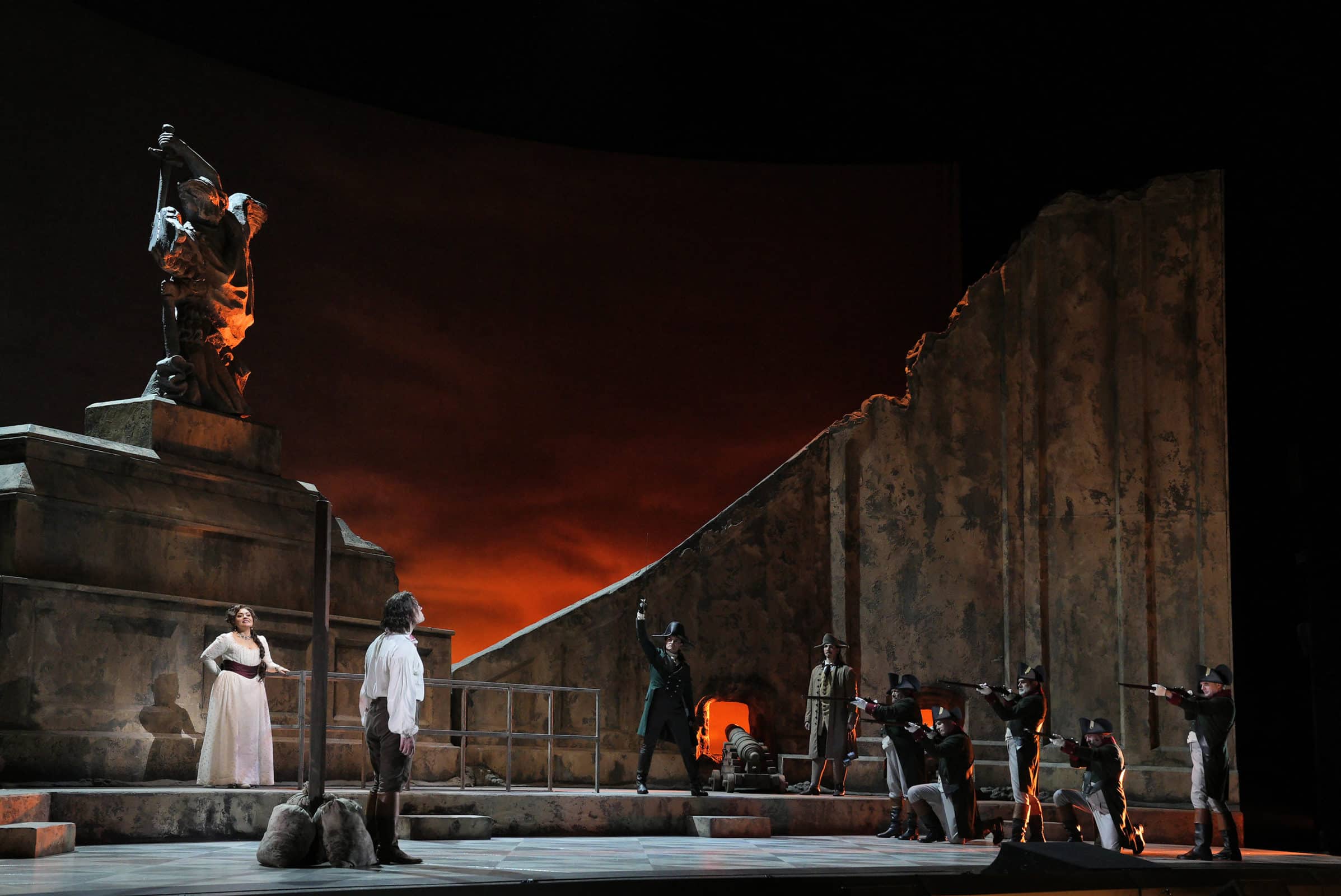
Michael Fabiano as Cavaradossi and Ailyn Pérez as Tosca in the final act of Puccini’s “Tosca” where her lover is killed by gunfire. Photo: Cory Weaver/San Francisco Opera
It isn’t long before soldiers run onto the stage to take Tosca into custody for Scarpia’s death. Emotionally distraught and defeated, she runs to the fortress parapet and in the final scene, she commits suicide by lunging to her death.

Ailyn Pérez as the title role in Puccini’s “Tosca” in the very final scene as she climbs the parapet to lunge to her death after witnessing Cavaradossi’s execution. Photo: Cory Weaver/San Francisco Opera
Puccini’s Italian thriller has enough suspense to keep you glued to your seat through all three acts despite knowing the inevitable outcome. After Tosca’s suicide on top of the Castel Sant’Angelo, the cast naturally comes out on stage to bow and acknowledge conductor Eun Sun Kim, Director Shawna Lucey and the orchestra. No one expects what happens next and fortunately, tragedy isn’t part of it.
Soloman Howard who played Angelotti kneels down on the stage facing Ailyn Pérez, who plays Tosca and proposes. Does it get more romantic than that? Atypical at a traditional opera house, many raised their phones to capture the beautiful scene for when romance takes over the hearts of everyone in the audience, who can deny such a special moment? After all, romance is at the heart of Italian culture so it was indeed a perfect way to end the final performance at the San Francisco Opera.
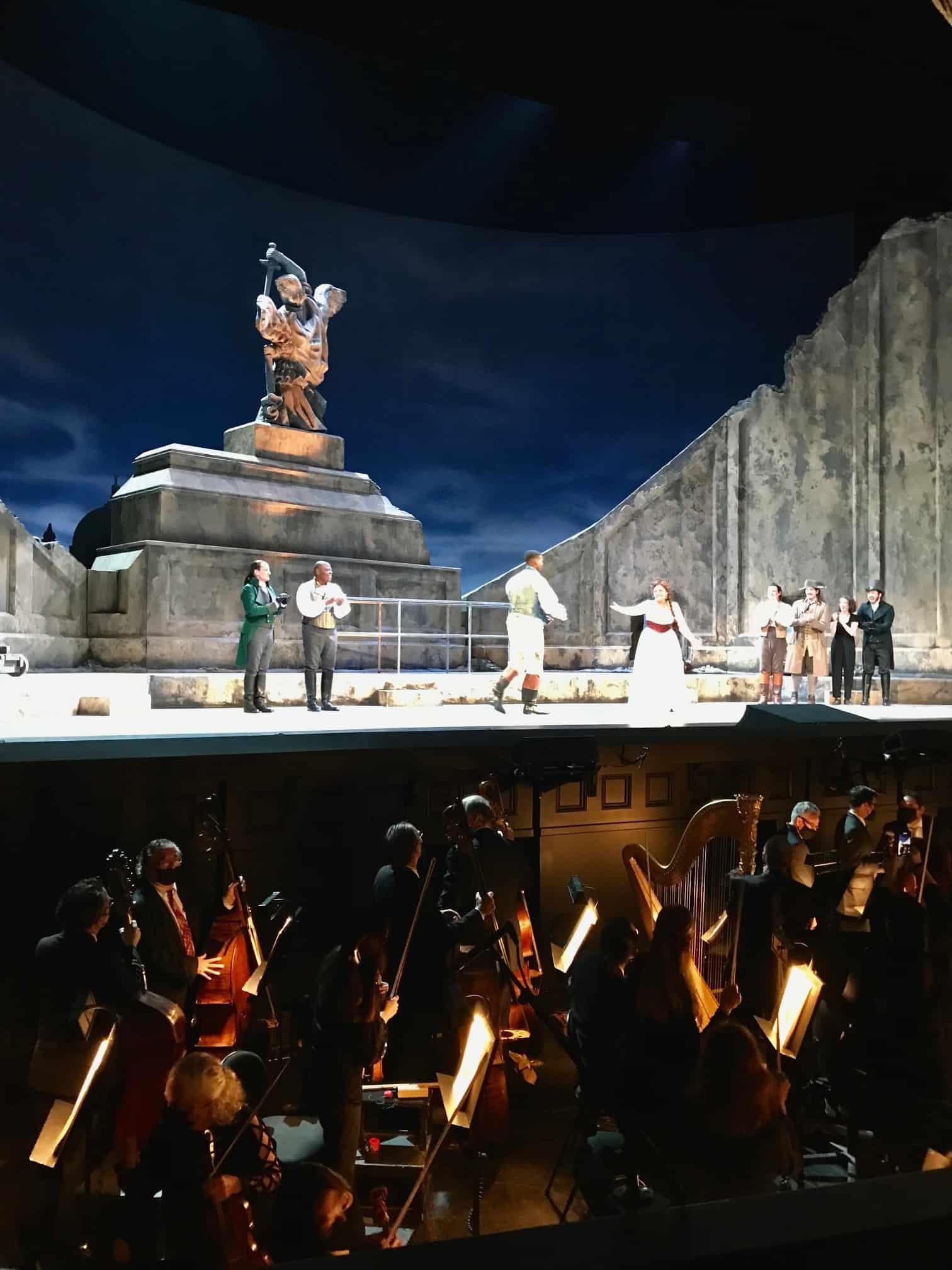
Above and below, Howard courageously and beautifully proposes to Perez as the cast happily looks on.
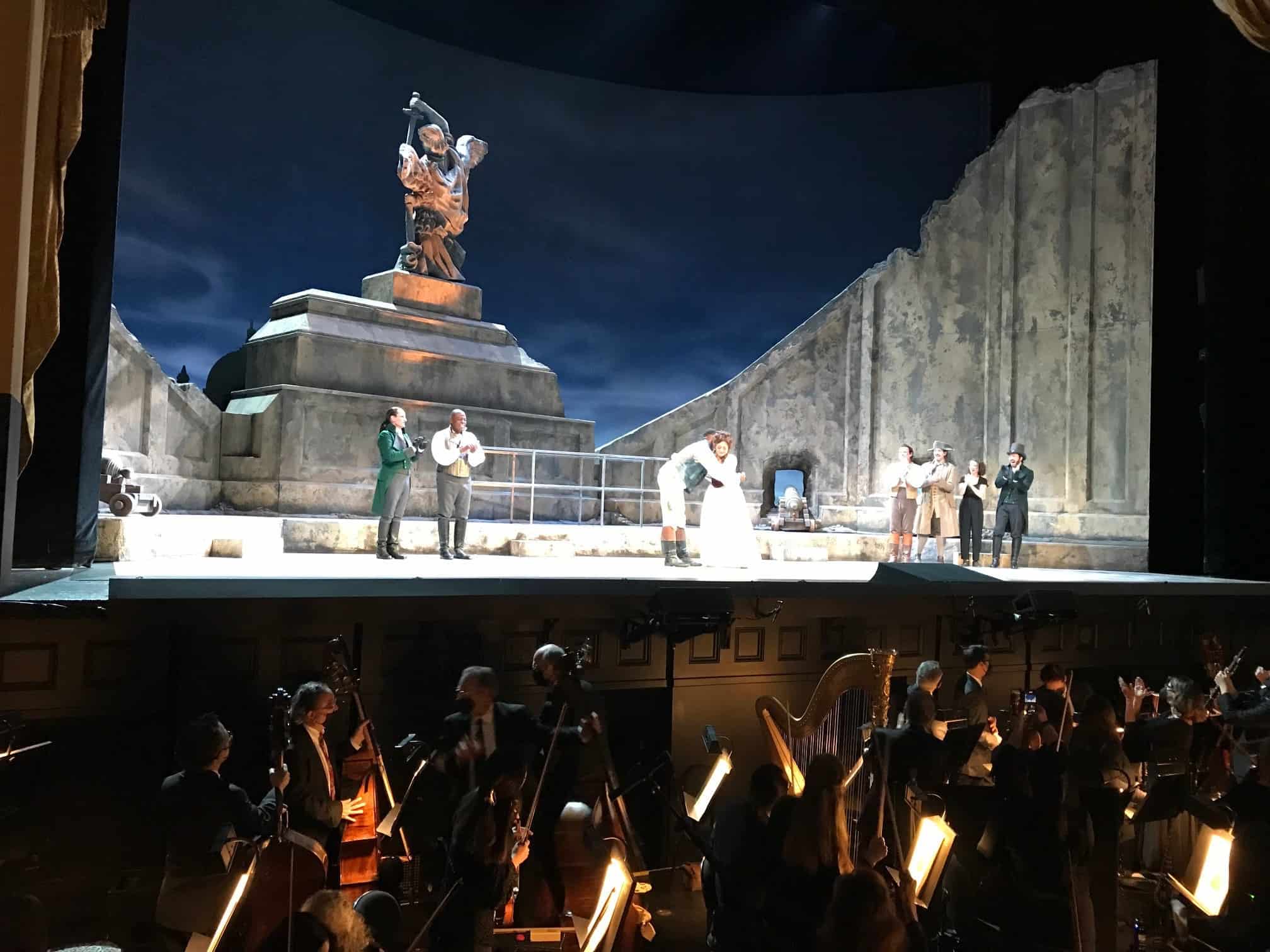
Other performances are coming up later this fall, so be sure to check out their latest schedule which includes links to purchase tickets.
About Eun Sun Kim
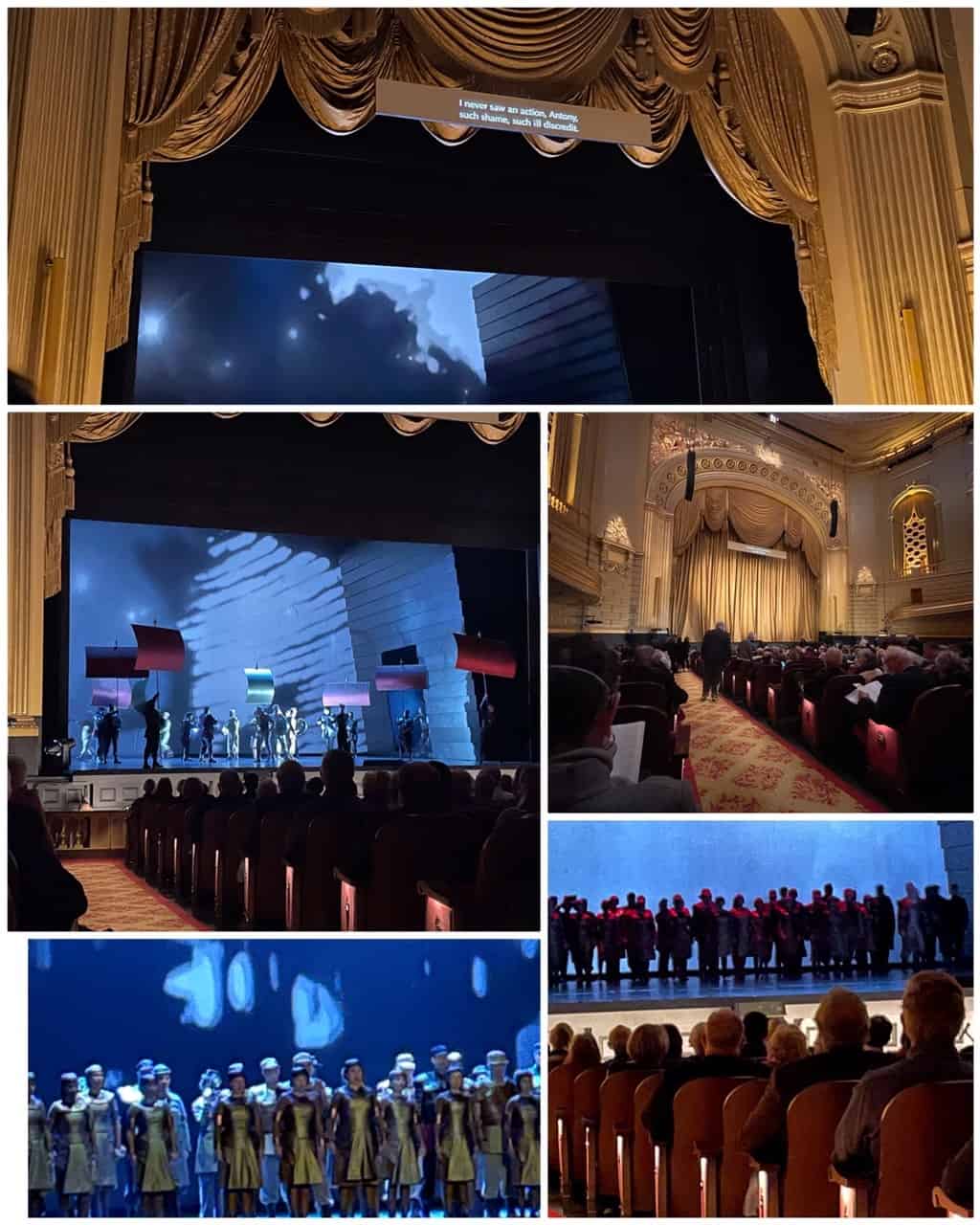
The cast takes a bow at the end of the performance.
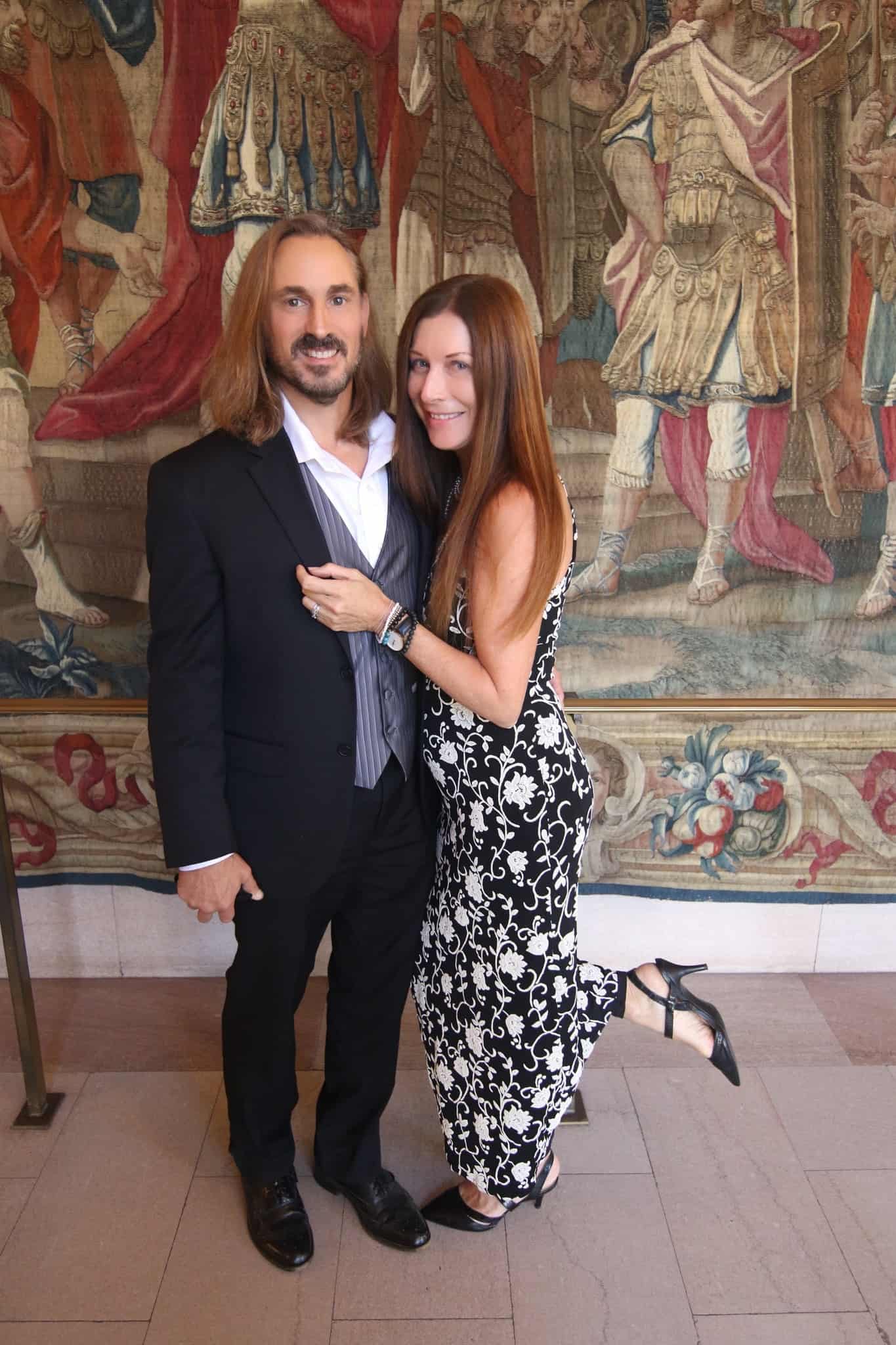
Anthony and I after the performance against a beautiful tapestry adorning one of the walls in the lobby.

Anthony and I outside the opera house before the performance started. Luckily, it was one of those rare sunny days in San Francisco where you didn’t need a jacket.
DETAILS
San Francisco, CA 94102-4509
(415) 864-3330

Renee Blodgett is the founder of We Blog the World. The site combines the magic of an online culture and travel magazine with a global blog network and has contributors from every continent in the world. Having lived in 10 countries and explored nearly 80, she is an avid traveler, and a lover, observer and participant in cultural diversity.
She is also the CEO and founder of Magic Sauce Media, a new media services consultancy focused on viral marketing, social media, branding, events and PR. For over 20 years, she has helped companies from 12 countries get traction in the market. Known for her global and organic approach to product and corporate launches, Renee practices what she pitches and as an active user of social media, she helps clients navigate digital waters from around the world. Renee has been blogging for over 16 years and regularly writes on her personal blog Down the Avenue, Huffington Post, BlogHer, We Blog the World and other sites. She was ranked #12 Social Media Influencer by Forbes Magazine and is listed as a new media influencer and game changer on various sites and books on the new media revolution. In 2013, she was listed as the 6th most influential woman in social media by Forbes Magazine on a Top 20 List.
Her passion for art, storytelling and photography led to the launch of Magic Sauce Photography, which is a visual extension of her writing, the result of which has led to producing six photo books: Galapagos Islands, London, South Africa, Rome, Urbanization and Ecuador.
Renee is also the co-founder of Traveling Geeks, an initiative that brings entrepreneurs, thought leaders, bloggers, creators, curators and influencers to other countries to share and learn from peers, governments, corporations, and the general public in order to educate, share, evaluate, and promote innovative technologies.








